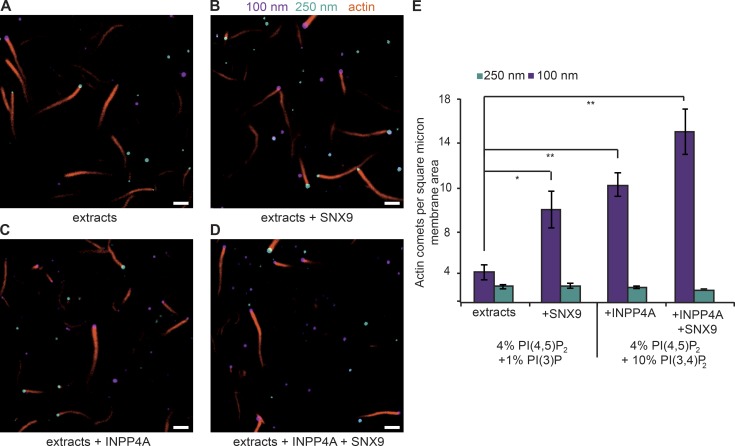Figure 5.
Membrane curvature preferences in INPP4A and SNX9 propagate to actin polymerization. Direct observation of vesicle samples containing 100-nm (rhodamine fluorescence, purple) and 250-nm (NBD, cyan) vesicles in a 1:1 ratio. (A) The lipid composition was 4% PI(4,5)P2, 1% PI(3)P, 65% PC, and 30% PS, and actin polymerization was triggered by the addition of HSS. (B) The lipid composition was 4% PI(4,5)P2, 1% PI(3)P, 65% PC, and 30% PS, and actin polymerization was triggered by the addition of HSS supplemented with 100 nM SNX9. (C) The lipid composition was 4% PI(4,5)P2, 10% PI(3,4)P2, 65% PC, and 30% PS preincubated with INPP4A. Polymerization was triggered by addition of HSS plus actin. (D) The lipid composition was 4% PI(4,5)P2, 10% PI(3,4)P2, 65% PC, and 30% PS preincubated with INPP4A. Polymerization was triggered by addition of HSS plus 100 nM SNX9 and actin. (E) Quantification of three independent experiments, 10 fields of view per condition (∼700 vesicles). One-way ANOVA between all conditions tested is significant: P = 0.0002. By post-hoc Tukey's HSD test, difference between extracts only and extracts plus SNX9: *, P = 0.040; for extracts only and extracts plus INPP4A: **, P = 0.005; and for extracts only and extracts plus INPP4A + SNX9: **, P = 0.001.

